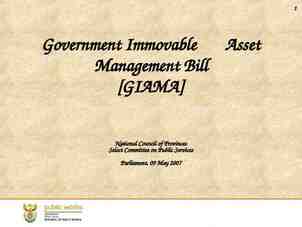Individualized Recovery Plan TAMARA LAYNE MS, OTR/L
27 Slides746.41 KB
Individualized Recovery Plan TAMARA LAYNE MS, OTR/L INTEGRATED SERVICES COORDINATOR MILWAUKEE COUNTY COMMUNITY ACCESS TO RECOVERY SERVICES (CARS) BRANCH
INTRODUCTION TO THE INDIVIDUALIZED RECOVERY PLAN (IRP) Universal CARS form that will replace the traditional “treatment plan” across all systems of care coordination/case management services in Milwaukee County (including: RSC, TCM, CSP, COP, CRS and CCS)
INTRODUCTION TO THE INDIVIDUALIZED RECOVERY PLAN (IRP) The IRP: Includes Lists the consumer’s OWN vision the consumer’s functional strengths Identifies Reflects barriers to life vision attainment goals/needs Lists the roles and interventions provided by each member of the Recovery Team Includes natural supports
INTRODUCTION TO THE INDIVIDUALIZED RECOVERY PLAN (IRP) IMPORTANT: In accordance with DHS 36.07 (5)(n) and P&P CSB-616 the IRP needs to be completed within 30 days of the date the Application/Admission Agreement is signed
THE IRP AND CCS According to DHS 36.17 (2m) and P&P CSB-616 the service plan shall include a description of all of the following: The Service Facilitation activities that will be provided to the consumer or on the consumer’s behalf The psychosocial rehabilitation and treatment services to be provided to or arranged for the consumer, including schedules and frequency of services provided The service providers and natural supports who are or will be responsible for providing the consumer’s treatment, rehabilitation, or support services and the payment source for each Measurable goals and frequency of data collection that will be measure progress toward desired outcomes
THE IRP AND CCS Once an IRP (service plan) is created: According to DHS 36.17 (c) and (d) and P&P CSB-616 1) the service plan needs to be reviewed and signed by the consumer, the care coordinator, and the MH Professional 2) If there is an active, recent or suspected substance abuse diagnosis, the SA Professional also needs to sign the IRP 3) A copy of the signed IRP needs to be given to all members of the treatment team (including the consumer) for reference
THE IRP: ESTABLISHING THE CONSUMER’S VISION Establishing an overarching vision for recovery begins during the screening and assessment process Sometimes, it may difficult for individuals to identify a vision for themselves The consumer’s vision statement needs to be in their own words The vision statement is reviewed with the Recovery Team during the Recovery Team meeting
THE IRP: ESTABLISHING THE CONSUMER’S VISION INTERVIEW QUESTIONS TO SUPPORT THE DEVELOPMENT OF A VISION: 1) What do you want your life to look like in five years? 2) If you could wave a magic wand and make your life exactly how you want it to be, what does it look like? 3) How do you want your life to be different?
THE IRP: ESTABLISHING THE CONSUMER’S VISION (IN AVATAR)
THE IRP: INDENTIFYING FUNCTIONAL STRENGTHS Identifying functional strengths is an important part of the recovery planning process Begin identifying strengths during the screening and assessing process as the consumer tells their story The Recovery Team can also assist the consumer in identifying functional strengths as sometimes this can be very difficult for anyone to do
THE IRP: INDENTIFYING FUNCTIONAL STRENGTHS Examples of functional strengths include: humor, a good support system, creativity, open-mindedness, a love for learning, hope, kindness, persistence, bravery, self-regulation, leadership, love, vitality, integrity (Peterson & Seligman) What functional strengths aren’t: “compliant with treatment,” “good personal hygiene,” “takes medications as prescribed,” “hasn’t been hospitalized in two years”
THE IRP: IDENTIFYING FUNCTIONAL STRENGTHS (IN AVATAR)
THE IRP: IDENTIFYING BARRIERS TO ATTAINING THE LIFE VISION What is preventing the consumer from accomplishing their life vision? Barriers are explored and identified during both the screening and assessment process and with the Recovery Team
THE IRP: IDENTIFYING BARRIERS TO ATTAINING THE LIFE VISION (IN AVATAR)
THE IRP: PRIORITIZNG NEEDS Now that you and the Recovery Team have established what barriers/needs are standing between the consumer and attaining their vision, the next step is to: Identify what barriers need to be prioritized (try to focus on addressing no more than four barriers at a time so that the plan remains manageable and realistic) Your highest priority need/barrier should be addressed first on the IRP, the second highest next, etc. Needs/barriers are prioritized during the Recovery Team meeting with the consumer actively involved in the process
THE IRP: DEVELOPING GOALS The overall objective is to: support the consumer in attaining their life vision In order to accomplish this: you and the Recovery Team need to support the consumer in setting smaller, measurable goals, that are intended to remove identified barriers and move the consumer closer to attaining their life vision
THE IRP: DEVELOPING GOALS EXAMPLE #1: “I want to get my daughter back”- Life Vision; “I am living with my mother and I need my own apartment to have my child”- Barrier; Goal: “Julie will find her own apartment in the next 90 days” EXAMPLE #2: “I want to stay clean, work and support my family”- Life Vision; “Every time I get upset, I drink to deal with my anger and fight with my wife”-Barrier; Goal: “Within the next 30 days George will use a coping skill to deal with his anger without drinking”
THE IRP: WHAT ARE GOALS AND WHAT DO THEY LOOK LIKE? Goals are personal benchmarks that continue to propel the consumer toward attaining their vision (steps in the recovery process) Goals need to be measurable and attainable (as demonstrated by projected completion date mentioned directly in the goal i.e. 30, 60, 90 days, etc.)
THE IRP: WHAT ARE GOALS AND WHAT DO THEY LOOK LIKE? EXAMPLES: 1) “Georgia will attend all of her therapy appointments over the next 30 days.” 2) “Justin will complete an intake appointment with DVR in the next 60 days.” 3) “Rachel will identify one recovery goal she would like to work on in the next 14 days.”
THE IRP: DEVELOPING GOALS IMPORTANT: This is the consumer’s plan and needs to be written in a manner that is respectful and can serve as a reference point for both the consumer and the Team A consumer needs to be invested in their goals (the Team should NOT be setting goals for the consumer) Encourage consumers to bring their IRP to contacts so you can regularly check-in re: goal progress and identify areas that need adjustment
THE IRP: DEVELOPING INTERVENTIONS AND STRATEGIES Strategies ARE: Methods/Interventions put in place to support the attainment of goals Rehabilitative in nature i.e. prompting, modeling, teaching, connecting to services, etc. Descriptive and clearly indicate why the strategy is supportive of the identified goal
THE IRP: DEVELOPING INTERVENTIONS AND STRATEGIES EXAMPLE: The CC will work with Nicki’s family to provide education and informational resources about Nicki’s mental health condition. The expected impact will be that Nicki’s current support system will increase and/or improve their understanding of Nicki’s mental health condition.
THE IRPAND CCS According to DHS 36.17 (2m) the service plan shall include a description of all of the following: The Service Facilitation activities that will be provided to the consumer or on the consumer’s behalf The psychosocial rehabilitation and treatment services to be provided to or arranged for the consumer, including schedules and frequency of services provided The service providers and natural supports who are or will be responsible for providing the consumer’s treatment, rehabilitation, or support services and the payment source for each Measurable goals and frequency of data collection that will be measure progress toward desired outcomes
THE IRP: LISTING YOUR GOALS, INTERVENTIONS, AND TEAM MEMBERS (IN AVATAR)
KEY POINTS: THE IRP The IRP needs to be developed directly with the Recovery Team (this includes the consumer) The goals and vision in the IRP are that of the consumer, NOT the members of the Recovery Team IRPs should be written respectfully and in a manner that the consumer can easily understand
KEY POINTS: THE IRP There should be a “golden thread” that links all of your documentation together Your start date for CCS services is the date the IRP is created by the Recovery Team and signed by Recovery Team members (unless services are added at a later date) The IRP can be updated as frequently as necessary, but is required to be entirely updated at least once every six months
THANK YOU
































